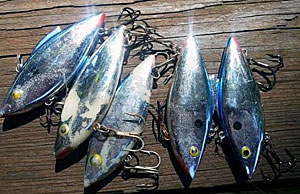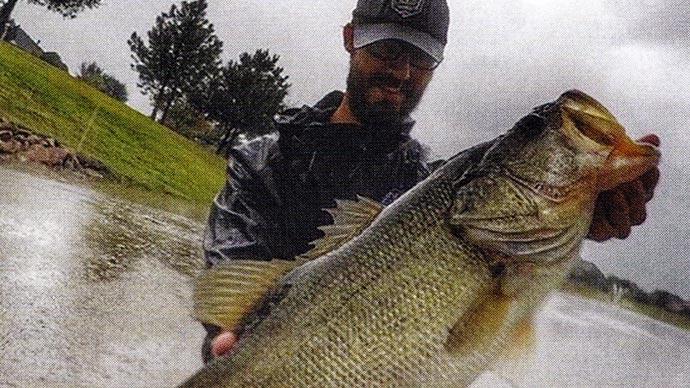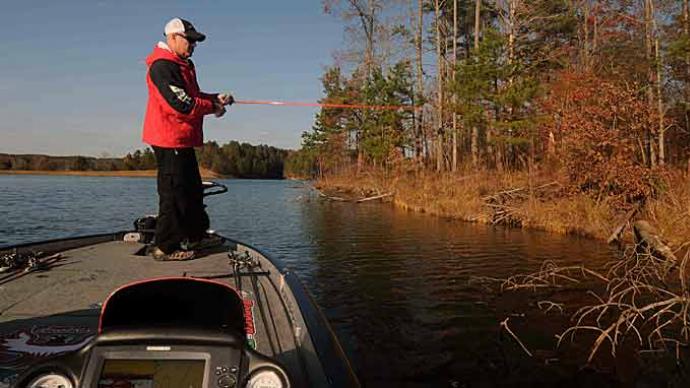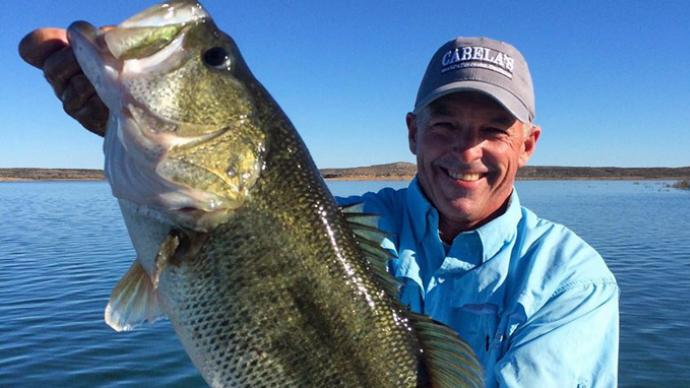
Lure selection can be exciting and exhausting. I developed a technique that has guided my tackle shopping behaviors. Although I have fished many lures in creeks and rivers, I eventually fell into a habit of exclusively fishing one lure. The lure was a 3/8-ounce floating Rat-L-Trap. I fished Rat-L-Traps before, with less than stellar results. They would sink and quickly become snagged, usually in deep water, and then the lure was gone for good.
I had fished streams and creeks for bass and panfish, mostly bluegill, as a kid. I fished many lures in those days: grubs, hair jigs, beetle spin lures, and small tube baits. The one lure that immediately stood out was the Rebel CrickHopper.
As I recall those early years, I can see a connection between the potent CrickHopper and the floating Rat-L-Trap. They both float. This is good for topwater popping in shallows near shore and around structures, especially structures protruding from the surface like stumps, logs, rocks, and fence posts. The floating trap I use is chrome with a blue back, and this works great for causing topwater disturbances and sending rays of sunlight flittering about, much like a silver Colorado blade, willow blade, or spoon. Yet, it can do this while remaining stationary for the most part, allowing the angler to keep the lure in the intended strike zone for longer.
The lure also dives and rattles when cranked, so it retains the fishability of a standard Rat-L-Trap. It floats and dives and rattles and is lipless, and it reflects light like a spinnerbait, yet you can fish it slow on top. You can pop it with much success. With the proper technique, the lure can mimic a wounded shad. You can wake it beneath the surface in clear water gleaming in the sunlight. You can fish it fast and dive it deep and let it float back to the surface to dive again. You can fish it like a jerk, and you can do all that with a varying degree of intensity, rattling just a bit, or with a zeal and enthusiasm so immense that you can hear the rattle with your ear as the bait charges through the depths.
I have caught crappie, largemouth, smallmouth, pike, bluegill, white bass, striper, and carp. I have fished dams, brooks, shallows, deeps, ledges, logs, and grass; creeks, rivers, ponds, and lakes, and I found that with this one lure, I could fish anywhere, any time of day, any day of the year, and I could produce pretty decent results.
Later years have found me with a new selection of tackle. I decided to expand my arsenal to include the world of plastic worm fishing. Now, I should mention that my dad has been a worm fisherman for as long as I can remember. Worm fishermen are a weird lot. I can recall trudging down to the water, schlepping my three-tier, fold-out tacklebox filled with all the different wooden and plastic and metal contraptions; my lightweight spinning rod, an ultra-lightweight spinning rod, casting rod, and all the other paraphernalia. Meanwhile, dear ol’ dad walked casually out in front of me with only a fishing rod and bag containing a few assorted plastic worms. For years I just refused to understand.
Forward in years, when I decided to investigate worms on my own, I was lucky enough to pick up some expert advice. At the time of my departure from the floating trap, he was primarily fishing weightless Yamamoto Senko worms on a 2/0 or 3/0 wide-gap hook and, as usual, having more luck than me. Despite wanting to retreat to my floating lure, I unlocked the power of soft plastics. However, I occasionally returned home with no fish. And that is a true bummer. But over time, I did learn. I began to take only my worms to fish with. I was crude and often angry, but I was making good casts and catching fish before long!
Taking time to develop a new technique truly is quite interesting in that I’m left to question the rest of my tackle box items. How about that elaborate plastic frog? I never caught anything with it, yet it remains in my box. What about all those old spinnerbaits that are not in any shape to use? Maybe it’s best to scrap them and chalk them up to a lesson learned.
For some anglers, it's okay to stick with what works, especially in competition, when the time for practice is over. But it’s important to remember that if you want to improve your fishing, you may try to increase the time you spend fishing in a practice mode. Accept that it is acceptable to go home skunked. It is okay to try new methods and techniques, and it’s easy to start by looking at old baits, the ones you keep in your box, the ones you always tie on a last-ditch whim, only to untie after a short period of not getting a bite.
Pick one lure and give it some thought. What type of bait is it? Do you know the idea behind its design? Try to figure out all that is going on with that bait. Become an expert if you can. I think that you may find yourself revisiting and revitalizing your tackle selection based on new information instead of impulse buying. Everyone enjoys those crazy impulse purchases. Alas, that may be the subject of another post.
Drew Abbate resides in Richmond, Va. He fishes mainly James River, Buggs Island, and various small ponds. His interests include fishing, vintage motorcycles, and adventure bicycling.




